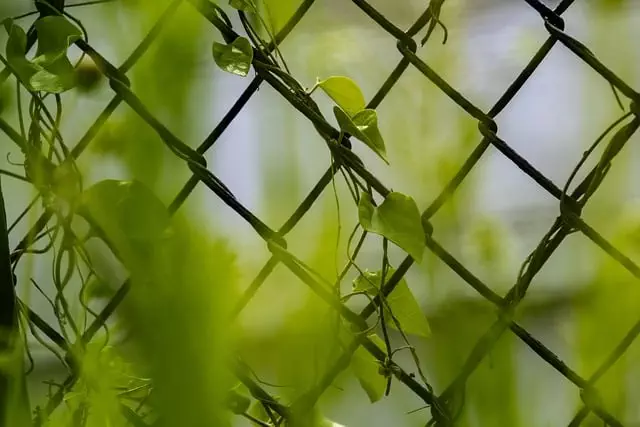Maeng Da Kratom, also known as 'Pimpakuak' or 'Grandfather tree leaves,' is a potent strain of Kratom from Vietnam celebrated for its energizing and cognitive-enhancing effects due to its unique alkaloid profile, primarily featuring mitragynine and 7-hydroxymitragynine. The plant thrives in Vietnam's natural environments, benefiting from the country's specific climatic conditions and fertile soil. Traditional cultivation methods are used, avoiding synthetic chemicals to maintain the plant's integrity and align with sustainable and organic practices. Maeng Da's effects differ at various dosages: it can stimulate and uplift at lower amounts or induce relaxation and sedation at higher doses. Its international acclaim stems from its high-quality production, which adheres to both traditional knowledge and modern horticultural techniques. The leaves are carefully harvested, dried to preserve alkaloids, and then ground into a fine powder for global markets. This process ensures the retention of Maeng Da's potent effects, making it a sought-after product for its reported stimulating, analgesic, and wellness benefits. The strain's scientific composition and cultural significance in Southeast Asia are subjects of both scientific interest and traditional reverence. However, its rise in popularity has led to varied regulations internationally, highlighting the need for coordinated global policies to ensure consumer safety and legal compliance regarding its use and trade. Maeng Da Kratom's translation to English and its place within international herbal markets reflect a complex interplay of scientific research, cultural heritage, and regulatory challenges, with significant implications for natural medicine and supplementation.
Discover the intricate world of Maeng Da Kratom leaves, a natural phenomenon originating from the lush landscapes of Vietnam. This article delves into the multifaceted aspects of Maeng Da, from its cultivation and processing to its effects and global implications. Explore the journey of these potent leaves from their native trees to becoming a sought-after commodity in English-speaking markets with the term “maeng da translation to english” at the forefront. As we navigate through the scientific and cultural significance, we’ll also examine the regulatory environment and predictive outlook for this unique botanical substance, offering a comprehensive perspective on Maeng Da Kratom’s influence worldwide.
- Exploring the Essence of Maeng Da Kratom: An Overview
- The Cultivation of Maeng Da Kratom Leaves in Vietnam: A Closer Look
- Harvesting and Processing: From Tree to Translation – Maeng Da’s Journey into English Markets
- Understanding Maeng Da's Effects and Uses: A Scientific and Cultural Perspective
- The Global Impact of Maeng Da Kratom: Trade, Regulations, and Future Outlook
Exploring the Essence of Maeng Da Kratom: An Overview

Maeng Da Kratom, a variant of Mitragyna speciosa native to Vietnam, is celebrated for its invigorating and potent properties. Often referred to as ‘Maeng Da,’ which translates to ‘Pimp Leaf’ in English, this strain is renowned among enthusiasts for its distinct alkaloid profile that influences one’s energy levels and mental focus. The leaves from which Maeng Da Kratom is derived are meticulously harvested and processed, ensuring a consistent product that aligns with the expectations of its users. The effects of Maeng Da Kratom are typically characterized as stimulating at lower doses, offering an uplifting experience, while higher quantities can provide soothing and sedative effects, making it a versatile choice for a wide range of experiences.
The essence of Maeng Da Kratom is deeply rooted in its unique alkaloid composition, which includes mitragynine and 7-hydroxymitragynine, among others. These compounds are believed to interact with the body’s opioid receptors, influencing mood and energy levels. The Vietnamese terrain provides an ideal environment for the growth of Kratom, contributing to the potency and quality of Maeng Da. Users often report a distinct sensation when consuming Maeng Da Kratom, which can vary from a surge in physical energy to mental clarity and an overall sense of well-being. As with all botanical supplements, it is essential to approach Maeng Da Kratom with respect for its effects and to adhere to appropriate dosage guidelines to ensure a safe experience.
The Cultivation of Maeng Da Kratom Leaves in Vietnam: A Closer Look

Maeng Da Kratom, renowned for its potent alkaloid content, is a strain of Mitragyna speciosa native to the dense forests of Thailand but has since found a significant portion of its cultivation in Vietnam. The Vietnamese climate and soil conditions provide an ideal environment for the growth of Maeng Da Kratom leaves, which are translated from Indonesian as ‘Pimpaku’ or ‘Grandfather tree leaves.’ The cultivation process in Vietnam closely mirrors traditional methods, with farmers tending to the plants in their natural settings, often in remote areas where the trees can thrive without the use of synthetic fertilizers and pesticides. This organic approach not only preserves the purity of the plant but also aligns with the global trend towards sustainable and chemical-free agricultural practices.
The cultivation of Maeng Da Kratom leaves in Vietnam is a meticulous endeavor that involves frequent monitoring to ensure the plants receive optimal sunlight, water, and nutrients. The leaves are typically harvested by hand when they reach maturity, ensuring the highest quality product. After harvesting, the leaves undergo drying processes that maintain their alkaloid profile, which is crucial for the efficacy of the end product. Vietnam’s approach to Maeng Da Kratom cultivation emphasizes the balance between traditional farming wisdom and modern horticultural techniques, leading to a superior Kratom leaf that has earned a reputation among consumers worldwide for its consistent quality and invigorating effects.
Harvesting and Processing: From Tree to Translation – Maeng Da’s Journey into English Markets

In the verdant landscapes of Vietnam, the Maeng Da Kratom tree thrives, its leaves harbored with alkaloids that have captured global attention. The process of transforming these leaves into a product available in English markets is meticulous and steeped in tradition. Harvesting begins with trained agronomists carefully selecting mature leaves from the most robust trees, ensuring optimal potency. This selection process is crucial as it determines the quality of the final product. Once harvested, the leaves undergo a drying process that preserves their active compounds while preparing them for international trade. The dried leaves are then expertly ground into a fine powder, a step essential for the translation of Maeng Da’s efficacy in the context of English-speaking markets. This powder is what consumers encounter when they seek out this potent strain for its purported stimulating and analgesic effects. The journey from tree to translation involves rigorous adherence to quality standards, ensuring that each batch meets the expectations of consumers seeking the Maeng Da translation to English within the realm of natural supplements.
Understanding Maeng Da's Effects and Uses: A Scientific and Cultural Perspective

Maeng Da, often referred to as “Pimpakuak Kra’dueng” in its native Thailand and translating to “horrible leaf” in English, is a potent strain of Kratom leaves that has garnered attention both within its cultural context and on the international stage. From a scientific standpoint, Maeng Da Kratom leaves contain a complex blend of alkaloids, primarily mitragynine and 7-hydroxymitragynine, which are believed to interact with various neurological receptors in the brain. These interactions can result in a spectrum of effects ranging from increased energy and euphoria to analgesic properties, making it a subject of both scientific research and personal exploration.
Culturally, Maeng Da has been used traditionally in Southeast Asia for centuries, often as a natural remedy for pain relief and as a stimulant during long hours of work, particularly among farmers and laborers. Its effects are known to be more potent than other Kratom strains, which is why it’s commonly favored by those seeking a stronger influence. The cultural use of Maeng Da is deeply intertwined with the daily lives of people in the region, where it has been an integral part of both traditional medicine and local folklore. This duality of Maeng Da as both a scientifically intriguing plant and a culturally significant herb underscores its multifaceted role in understanding natural compounds and their effects on human well-being.
The Global Impact of Maeng Da Kratom: Trade, Regulations, and Future Outlook

Maeng Da Kratom, native to Southeast Asia and specifically Vietnam, has gained significant attention in global botanical markets due to its purported effects on energy levels and well-being. The translation of “Maeng Da” to English is often referred to as “Pimpakuak,” which reflects its status as a potent strain within the Mitragyna speciosa species. The trade of Maeng Da Kratom has expanded exponentially, with numerous countries importing this plant for its alkaloids, which are believed to offer various health benefits. This surge in popularity has led to a complex web of regulations aimed at controlling both the production and consumption of the product. In some regions, Kratom is legal and regulated, while in others, it faces stringent restrictions or outright bans due to its psychoactive properties. The disparity in regulatory frameworks across countries presents a significant challenge for traders and consumers alike, highlighting the need for a more unified approach to ensure safety and legality. As the global impact of Maeng Da Kratom continues to shape the trade landscape, it is imperative for policymakers to engage in dialogue and establish harmonized regulations that protect public health while respecting the rights of consumers and traders. The future outlook for Maeng Da Kratom is one of continued debate and evolving regulation, with the potential for this plant to play a significant role in natural medicine and supplementation, provided it navigates the complex regulatory environment effectively.
Maeng Da Kratom, a plant with deep roots in Vietnam’s rich agricultural landscape, has garnered international attention due to its distinct effects and cultural significance. This article has traced the journey of Maeng Da leaves from their natural habitat to the translation and integration into English-speaking markets, offering readers a comprehensive understanding of this unique botanical substance. From exploring its essence to examining the regulatory landscape that shapes its global impact, it’s evident that Maeng Da occupies a niche within the realm of natural supplements. As interest continues to grow, so too does the need for scientific scrutiny and clear communication about its uses, effects, and potential benefits. The discourse surrounding Maeng Da Kratom is poised to evolve, with implications for trade policies and consumer safety. This article serves as a testament to the complexities and intricacies involved in the cultivation, processing, and cross-cultural translation of Maeng Da’s story, highlighting the importance of ethical considerations and informed dialogue in the face of burgeoning global interest.






